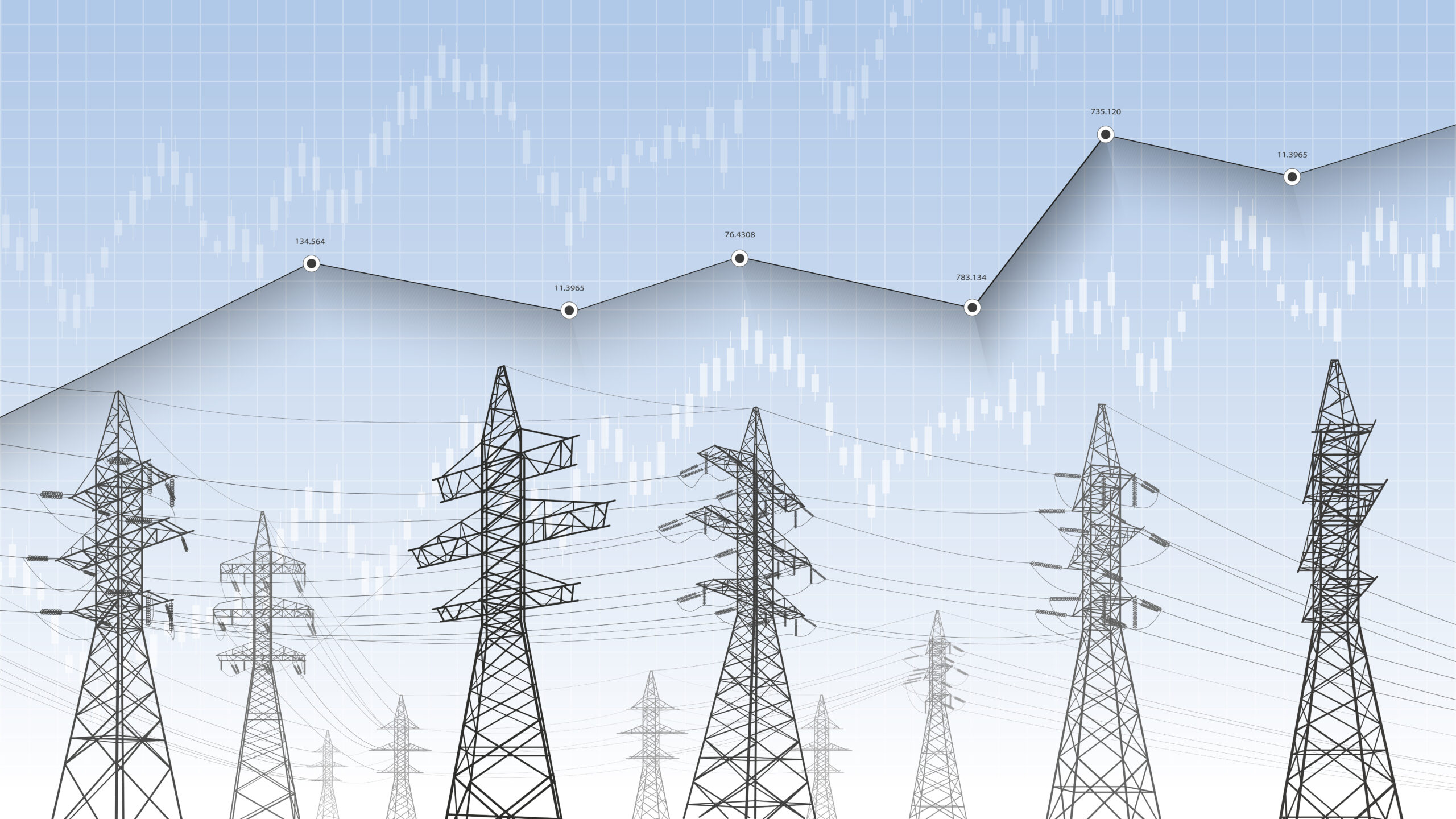The Status of Power and Energy Sector in the National Budget FY2025–26: Progress, Gaps, and Future Direction
Abrar A Bhuiyan
The power and energy sector is still one of the most important areas for the Government of Bangladesh. Every year, a good amount of money is given to this sector through the national budget and the Annual Development Programme (ADP). In the FY2025–26 budget, even though the total allocation is slightly less than the previous year, there are some developments, some positive and some challenging, that need close attention. This article discusses the present condition of the sector in light of the current national budget, mainly focusing on generation, transmission, distribution, role of government agencies, attention to renewable energy (RE), and the reforms that are needed for future sustainability and efficiency.
Power Generation
In the electricity supply system, there are three main parts to talk about: generation, transmission, and distribution. First, electricity generation in Bangladesh has grown a lot in the last ten years. But in recent times, especially in the FY2025–26 budget, the government has taken a more careful approach. No new fossil fuel-based power plants have been approved this year. This shows that the government is trying to control the problem of overcapacity and also wants to avoid more financial pressure on the sector.
The Rooppur Nuclear Power Plant is still a very important project, and around 83% of the work is already done (CPD Power and Energy Budget Analysis FY25-26). It is getting a large part of the funding. Although the progress of this big project is a positive sign, there are still some concerns. The costs are increasing, and there is a question about how ready the plant will be for long-term operation and how environmental risks will be handled. Also, there is no clear plan yet on how the government will retire old and inefficient fossil-fuel-based power plants that are making the electricity cost high. The Bangladesh Power Development Board (BPDB) is facing continued financial losses, mainly because of high capacity payments to plants that are not always running. A clear and effective strategy is needed to balance the generation system and to focus more on clean and cost-effective energy sources.
Transmission Sector
One of the big problems in the power sector is the weak and slow transmission system. In the FY2025–26 budget, there are 11 projects related to transmission, but seven of them are carried over to next fiscal year due to slow progress (ADP FY26, MoF). This shows poor performance in project implementation and weak coordination. For example, the project called “Evacuation of Power from Rooppur Nuclear Power Plant to National Grid” is only about 64% complete, even though the power plant itself is almost done (CPD Power and Energy Budget Analysis FY25-26). This mismatch may cause big inefficiencies in the system. If transmission projects are delayed, it not only increases the total cost but also stops electricity from reaching industrial areas and fast-growing cities properly. To fix this, the Power Grid Company of Bangladesh (PGCB) needs more strength and better decision-making power.
Distribution Sector
Distribution is the last part of the electricity chain, and it is directly connected to how consumers feel about electricity service. It also affects the overall system efficiency. In this budget year, the number of distribution projects under the Power Division has gone down from 28 to 19 (ADP FY26, MoF). While this may look like a negative sign, many new zonal projects have been included, especially outside of Dhaka. These projects are aiming to give better electricity access to different parts of the country.
Projects such as “Smart Prepaid Meter Installation” and “Smart Grid Phase-1” are very important to improve bill collection, reduce system losses, and manage electricity demand better. But the problem is that many of these projects are not being implemented on time. If the projects are not completed properly and quickly, the benefits of digital systems will not reach the people. Another issue is that there is not enough cooperation between different distribution companies like DPDC, DESCO, NESCO, and BREB. To get better results, the government should introduce a central digital monitoring system and make sure the fund management is more effective.
Government Agencies
There are several government agencies that are involved in the management of the power and energy sector. But their performance is not the same. BPDB, which is the biggest agency under the Power Division, is having a hard time due to increasing debts and financial losses. A large part of this problem comes from the power purchase agreements signed under unsolicited deals with high capacity charges. On the other hand, Bangladesh Petroleum Corporation (BPC) is currently making profits. However, this profit is not being used to support other weaker parts of the energy sector. Because of this, there is an imbalance among the institutions, and it affects how efficiently funds are used.
Renewable Energy
Bangladesh has promised to become a clean and green energy country through many national and international goals. But when we look at the budget, this commitment is not strongly visible. In the FY2025–26 ADP, the number of renewable energy projects has gone up a little; from four to seven. But at the same time, 37 Letters of Intent (LoIs) for solar energy projects have been cancelled. This shows that the policy is not consistent. The budget also does not offer any tax or duty reductions on important items like solar panels, batteries, or inverters. There is no clear financial plan or incentive structure for solar rooftop systems, net metering, or mini-grids. Because of this, private investors and local businesses are losing interest. If this continues, Bangladesh will not be able to reach even the small renewable energy targets it has set in the Integrated Energy and Power Master Plan (IEPMP).
Budget Allocation
The total allocation for the power and energy sector in the FY2025–26 budget is BDT 22,520 crore, which is 0.8% less than the previous year (Budget documents, Ministry of Finance). But when we look deeper, we see that the operating budget has increased by around 15%, and the development budget has decreased by 0.91% (Budget Documents, Ministry of Finance). This means that more money is being used for running costs, salaries, and payments, and less is being spent on new projects and development.
There is no big move yet to reduce or remove subsidies for fossil fuels. Liquefied Natural Gas (LNG) is still receiving government support, while renewable energy is not being encouraged financially. There is also no sign of any carbon pricing system or any Renewable Energy Subsidy Fund. Overall, the important reforms needed to make energy affordable, sustainable, and financially stable are missing from the budget plan.
Policy Recommendations
To secure a balanced, affordable, and sustainable energy future for Bangladesh, a set of integrated and forward-looking policy actions must be undertaken. First, institutions like BPDB and Petrobangla should prepare a comprehensive five-year financial roadmap. This should aim to reduce mounting operational losses, clear pending liabilities, and signal creditworthiness to attract private investment into the sector.
Second, support for renewable energy (RE) must be significantly enhanced by increasing the number and scope of RE projects in the Annual Development Programme (ADP). Additionally, duties and VAT on solar, wind, and battery storage components should be reduced or removed, and targeted incentives should be introduced for rooftop solar, mini-grids, and off-grid solutions. Third, modernizing the national electricity network through smart grid development must become a priority. This requires increased budgetary allocations for automation, digital monitoring, and system upgrades across all distribution zones. Fourth, domestic gas exploration needs urgent attention. The government should prioritize upstream activities over expensive LNG imports by ensuring timely fund release, improved project governance, and building technical capacity within BAPEX and Petrobangla.
Also, the current pricing system lacks transparency and predictability. An independent pricing body should be established to set energy tariffs based on economic rationale and stakeholder consultation, thereby reducing political interference. Without these reforms, the sector will struggle to meet the twin goals of energy security and sustainability.
In conclusion, the power and energy sector in Bangladesh is now at an important turning point. The FY2025–26 budget shows some good steps but also gives clear warnings. To reach the long-term goals of energy security, sustainability, and equal access for all, the government has to do more than just allocate funds. It must focus on consistent policies, stronger institutions, and new financial ideas. Only then can the energy sector become a real driving force for inclusive development and resilience against climate change.
Author’s Biography:
 Abrar A Bhuiyan is an Economics graduate turned think tanker. Passionate about retrofitting systems for efficient impact and challenging déformation professionnelle through interdisciplinary dialogue. Research interests include national investment strategy, decentralized energy, and economic modeling.
Abrar A Bhuiyan is an Economics graduate turned think tanker. Passionate about retrofitting systems for efficient impact and challenging déformation professionnelle through interdisciplinary dialogue. Research interests include national investment strategy, decentralized energy, and economic modeling.


